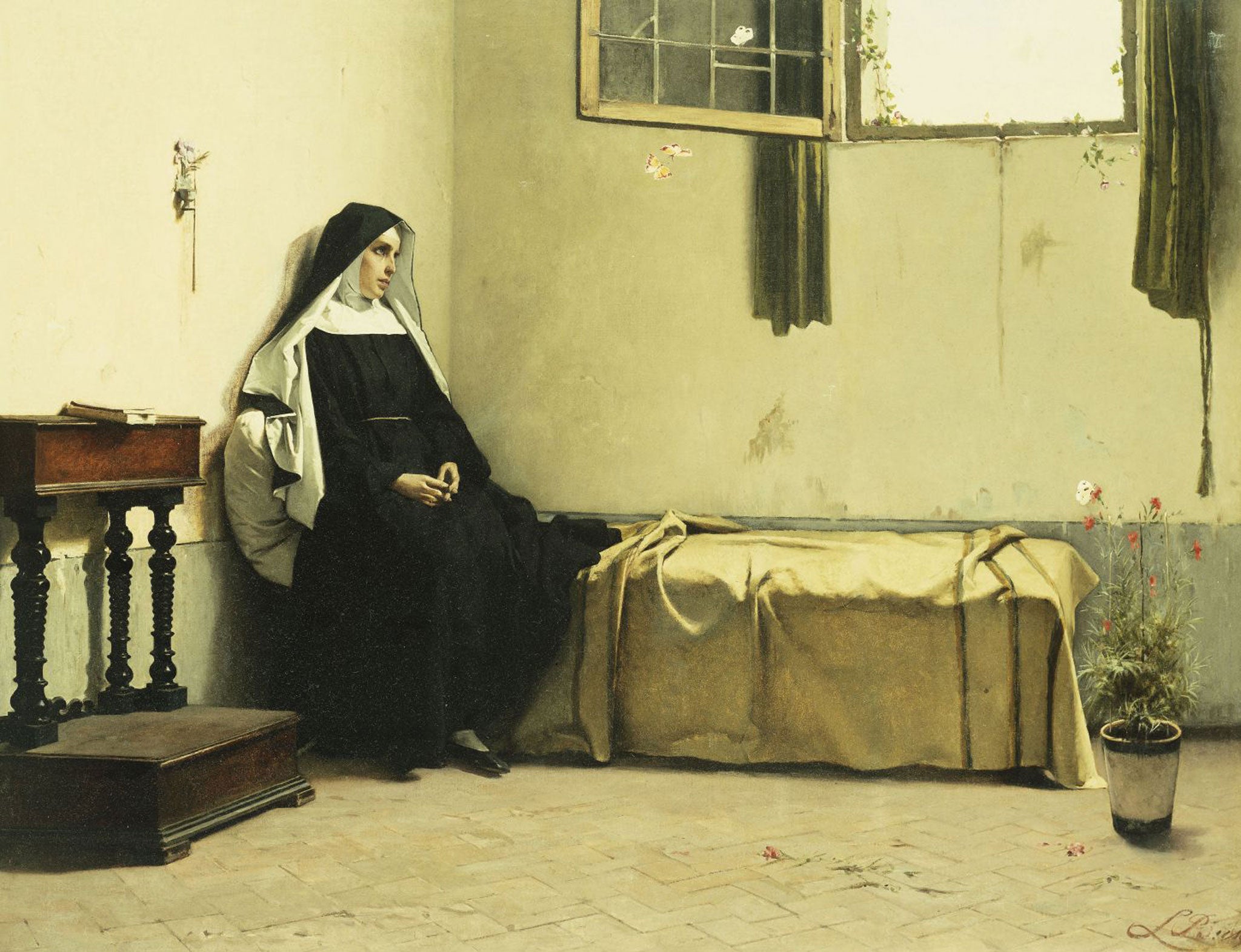The Nuns of Sant'Ambrogio by Hubert Wolf, book review: Confessions of killer nun
The real-life scandal of an Italian convent run by a murderous and predatory lesbian

Your support helps us to tell the story
This election is still a dead heat, according to most polls. In a fight with such wafer-thin margins, we need reporters on the ground talking to the people Trump and Harris are courting. Your support allows us to keep sending journalists to the story.
The Independent is trusted by 27 million Americans from across the entire political spectrum every month. Unlike many other quality news outlets, we choose not to lock you out of our reporting and analysis with paywalls. But quality journalism must still be paid for.
Help us keep bring these critical stories to light. Your support makes all the difference.
You don't come across killer lesbian nuns in fiction that often, unless it's bad fiction. Real life is another matter, however, as a pious German princess called Katharina von Hohenzollern discovered – almost at the cost of her life – after she resolved to become a nun and joined a convent in 1858.
Katharina chose Sant'Ambrogio, or St Ambrose, believing that this enclosed convent in the heart of Rome, known for its piety, would free her from the snares and cares of a cruel world.
Don't judge a convent by its cover. When Katharina was rescued from St Ambrose a year later, more dead than alive, she brought with her a dossier of crimes so shocking that the Inquisition took years to wade though them. Once they had finished their enquiries, they not only sealed up the details in their vaults but razed the convent for good measure. One of Katharina's many eye-catching claims was that the convent's angelic-looking and charismatic number two, and de facto boss, Reverend Mother Maria Luisa, was an active and very predatory lesbian who pressured the more attractive nuns into spending nights in her cell.
There she introduced them to the secrets of what she called the "heavenly liquor", which could be made to flow from her private parts and which the nuns were invited to drink, after which – an extra kinky touch – they had to dip their fingers in and make a sign of the cross.
Apart from the younger nuns, another regular nocturnal visitor to Reverend Mother's busy cell was the convent confessor, Fr Peters, the only man allowed into the building, incidentally.
If Maria Luisa's hyperactive sex life wasn't enough to occupy the Inquisition, the incriminating dossier contained an even bigger bombshell. After Reverend Mother realised that Katharina was onto her, she had tried to kill her. When the Inquisition moved in and Maria Luisa started talking, her confession put Katharina's original claims into the shade. It turned out that weird sexual initiation rites had been going on at St Ambrose for years. Reverend Mother had learned the "heavenly liquor" shtick from none other than the late abbess.
Maria Luisa also admitted to killing off at least three nuns before attempting the same with Katharina. One ex-lover had to go because she knew too much. Another set herself up as a kind of rival, claiming to have had a couple of visions of the Virgin Mary. Reverend Mother wanted a complete monopoly on such visions at the convent, so this nun also finished up in the cemetery.
Overconfidence is often the downfall of killers and that is what did for Maria Luisa in the end. After dispatching a series of annoying nuns to their eternal rest, it all seemed rather simple. But poisoning the unwanted daughters of the Italian middle class was one thing. Murdering a German princess with powerful relatives all over Europe was another.
The princess's sheer bulk also saved her. No matter how much deadly nightshade and ground glass Reverend Mother pumped into her food, she just wouldn't croak.
As befits a German scholar and an authority on the Catholic Church, Professor Wolf retells this incredible story with a straight face. I hardly knew whether to laugh or cry. Solid German princess confronts vampy Italian nun with a cross in one hand and bottle of poison in the other. You couldn't make it up. It would make a great film.
Join our commenting forum
Join thought-provoking conversations, follow other Independent readers and see their replies
Comments